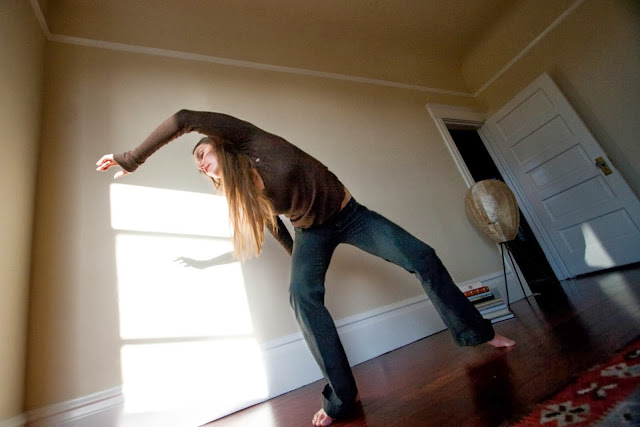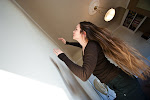These stories harken back to very old times: feudal times, agrarian times, pagan times. They are this old and still alive in us. I believe they are important. The narrative structures are imprinted in us.
Can we believe in the Victorian image of a prettily gowned princess politely covering her screaming mouth with a lily white hand? Beauty, ugliness, dirt, old age, laziness and industriousness are always mentioned. People do terrifying things to each other in fairy tales and myths. Gods do awful things to humans, and to each other.
When we started workshopping with this in mind, we began with monsters. Being a creature that is one and clearly defined became the first notion to question. When we created movement from that position it became obvious upright and down low were taking on new meanings. In the Genesis of the Bible up and down, light and dark are put in order - and put in order of preference. From between the pages monsters and demons fall, drop, glide and tumble out and take cover in other books.
In that perfectly organized world grows a fruit that will always be tasted by a young woman, no matter what the warnings. She will know, she will fall down in sleep, she will cover herself, she will let down her guard and kiss.
We live surrounded by narratives. My favorites are those seemingly detached from everyday life: myths, legends, fairy tales. They touch both the unnamable and the acknowledged experiences in me. I wonder how much these stories formed the very experiences through which I relate to them.
I go old school; I cherish the traditional fairytales with poor girls and fair princesses, wizened grandmothers, magical objects and golden fruit. The ones that share elements with ancient mythologies. They are gateways to shimmering, cruel worlds.


